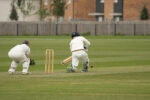PSYCHOMETRY: TRUTH OR MYTH?

What exactly is the connection between an object and its owner? Can the memories or the personal information of the owner be embedded in that object? Similarly, is it possible for a jinxed object to bring ill-luck or misfortune to people who are associated with it? The idea, undoubtedly, would seem preposterous and ludicrous to a scientific mind, to say the least. But, the truth is that such bizarre cases are galore!
A well-publicised case of bad luck concerns the car of Archduke Franz Ferdinand, heir to the throne of Austria and Hungary. In 1914 he and his wife, Duchess Sophie of Hohenberg, were travelling in a car when they were assassinated in it. The murder proved to be too costly, as it triggered the First World War.
Later the car was bought by General Oskar Potiorek (1853-1933) of the Austro-Hungarian army who served as Governor of Bosnia and Herzegovina. He was a co-passenger in the car that carried the archduke and his wife. A few weeks later, the brave General suffered a crushing defeat at Valjevo in western Serbia. The shock and disgrace he faced made him lose his mental equilibrium and he died as an insane man.
An Austrian captain bought the car and within a fortnight ill-luck befell him. Killing two peasants, he lost control of the car, bumped against a tree and fractured his neck.
After the War, the Governor of former Yugoslavia bought the car. In just four months, four fatal accidents occurred, the Governor losing one hand in one accident. Becoming superstitious, he sold the car to a doctor who could enjoy its luxury only for six months when he was crushed to death inside it.
The next unlucky victims of the ill-fated car were a wealthy jeweller who committed suicide; a Swiss racing driver who was killed in a race when the car threw him over a wall; and a Serbian farmer. The car’s last owner was one who owned a garage and who was killed in an accident along with his four friends.
After such a long trail of unusual and disastrous incidents, the fate of the car was finally sealed when it was taken to the Vienna museum in Austria where since then no untoward incident has been reported.
Commenting on the misfortunes that struck the subsequent owners of the doomed car of the archduke, some open-minded researchers have opined that these queer incidents cannot be put down to mere coincidences that are astoundingly impossible.
A somewhat similar story is related to Hotei, the Japanese god of Good Luck. This is an idol of a half-naked fat man. Mr. and Mrs. C. J. Lambert, a middle-aged English couple, bought this statuette at a very low price at a junk shop where it was on display, But, as long as this idol of ‘good luck’ stayed with them, they were dogged my ‘bad luck’ when the couple suffered from various ailments. Finally, they sold it to a Japanese manager of an oriental shop where they never entered again.
Psychologists explain that there should be something in the thinking of the owners of such objects who develop a negative attitude and feel that ‘something bad or evil’ is imminent. They suggest that possibly the accidents occur due to the prejudices that exist in the victims’ unconscious mind.
Not all subscribe to this theory. Edward Russel, a journalist and a psychic investigator, has put forward the theory that there may be some connection between the ‘negative thought field’ and the ‘curse’ that seems to afflict the people. Russel’s theory explains that these thought fields implant themselves in objects like an electric field which produces patterns similar to a magnetic recording tape. Although this argument seems to be more reasonable or tenable, it is not wholly satisfactory or conclusive. The sceptics reject this theory, questioning the connection of houses, cars, ships or aeroplanes with the misfortunes of their occupants.
Psychometry or psychoscopy, also known as object-reading, is the claimed ability to elicit unknown history from an object by making physical contact with it. The term psychometry or ‘soul measurement’ was coined by Joseph Rodes Buchanan (1814-1899), an American physician and professor of physiology in a medical institute in Ohio. He argued that the Past is entombed in the Present and the discoveries of psychometry would enable us to explore the history of man, just as those of geology enable us to explore the history of the earth. “There are mental fossils for psychologists as well as mineral fossils for geologists and I believe that hereafter the psychologist and the geologist will go hand in hand….”, Buchanan wrote. But, the Polish-born American psychologist Joseph Jastrow (1863-1944), was a critic of Buchanan’s work on psychometry, saying that it was based on delusion and wishful thinking.
Work of Gerard Croiset
Gerard Croiset (1909-1980) was a Dutch psychometrist who advanced the theory that inanimate objects transfer strong physical and atmospheric impressions. A psychometrist is said to possess the capacity to feel and read these impressions given out by an object. Croiset began to be aware of his psychic gifts when he was a youth working for a watch repairer. On one occasion he held a ruler belonging to his employer and saw events related to this employer who confirmed their accuracy. His services were often solicited by police detectives to help trace missing persons, though authenticated successes were reportedly few. Compared against his failures, his success rate was ruled no better than chance.
Creepy story of a Japanese doll
Is it true that sometimes souls continue to dwell in the most precious objects of the deceased? Okiku, sister of Eikichi Suzuki, died in 1919 of a severe fever at the age of 3. Her doll to whom she gave her name was the most treasured item of the little girl. She could never be separated from her ‘friend’. As Suzuki was going to the War in 1938, he carefully deposited the doll in a box with his sister’s ashes and kept it in Mannenji Temple in Hokkaido, dedicated to the Jodo sect of Buddhism. When Suzuki returned from the War in 1947 he immediately went to the temple and opened the box in front of the monks. To their surprise, the doll’s hair had grown in length. A scientific examination proved that everything was intact and it was human hair. The doll was placed on the altar, but its hair continued to grow, making the temple a place of pilgrimage. Some have conjectured that probably the soul of Okiku resides in the doll which was so dearest to her. This incident has inspired Japanese films and kabuki plays, a traditional form of Japanese dance-drama.
While Canada is supposed to be the home of the doll Mandy, one of the most famous haunted dolls in the world, the 2014 horror movie “Annabelle” is said to be the real-life story of a doll who was possessed by a demonic spirit. The haunted doll industry is bustling when almost every day buyers and sellers online offer proof of hauntings and accounts of otherworldly activity, hoping to be paid for a paranormal experience. ***







